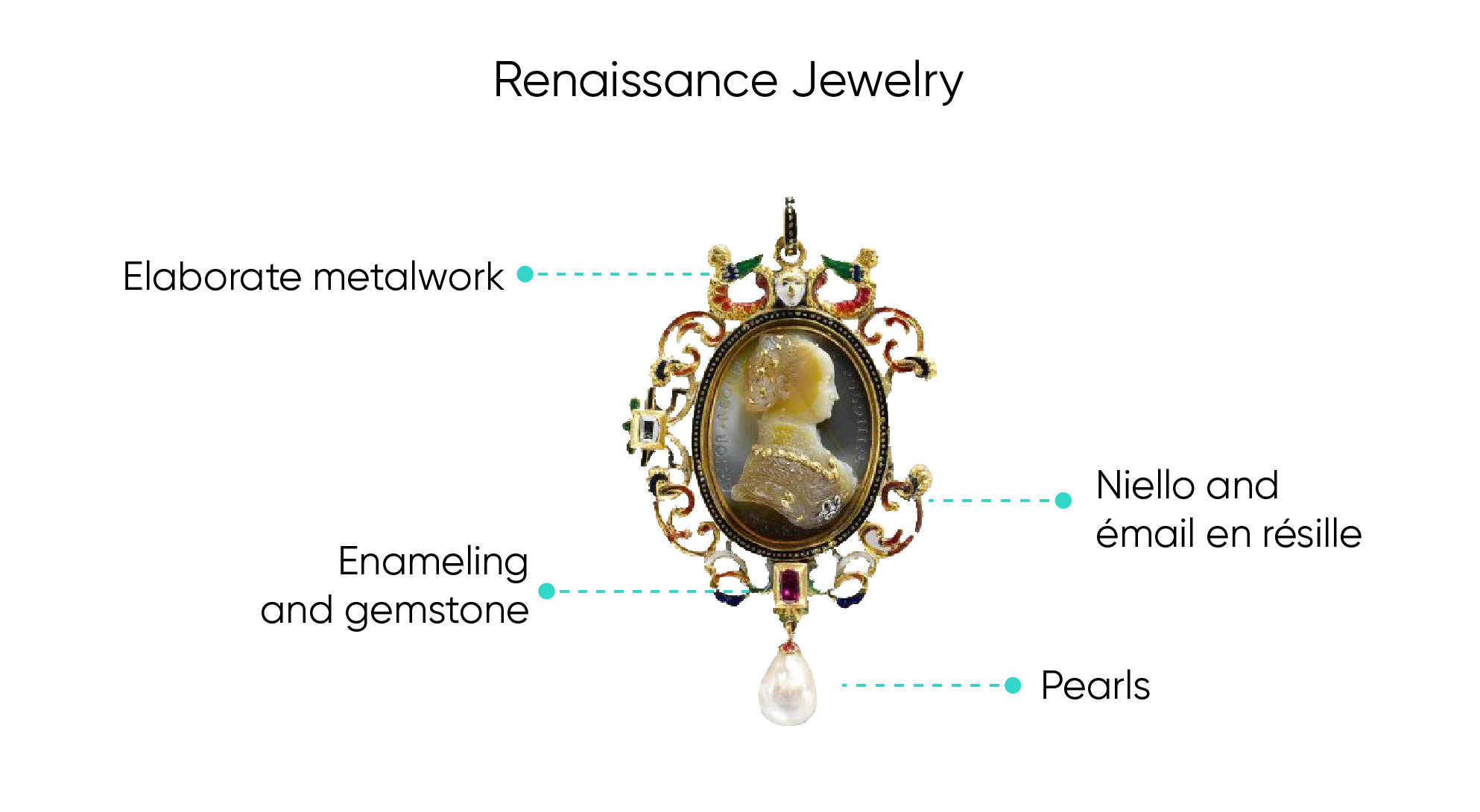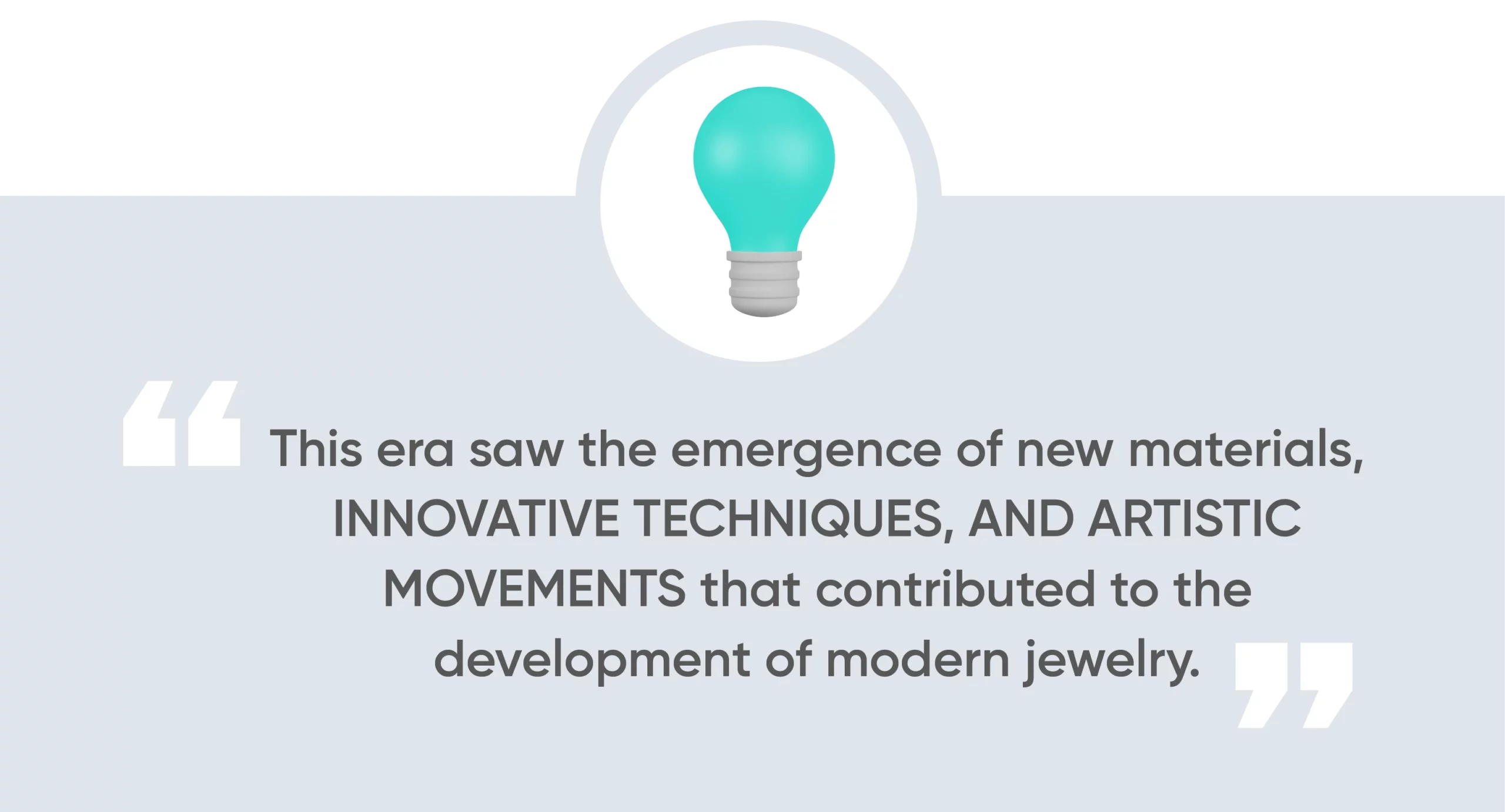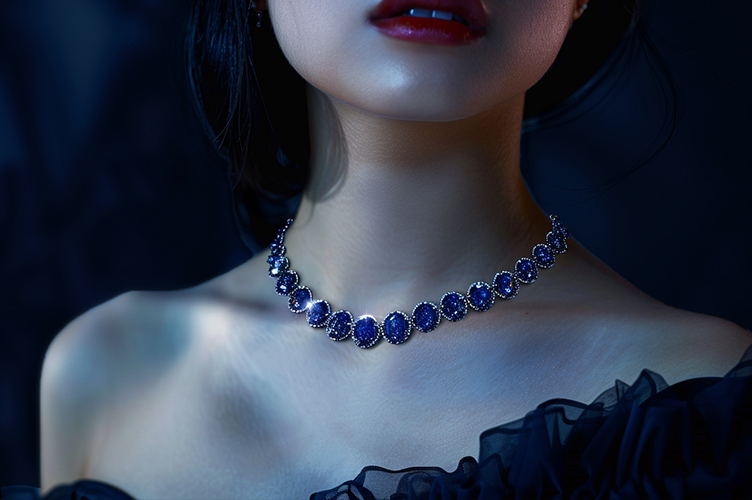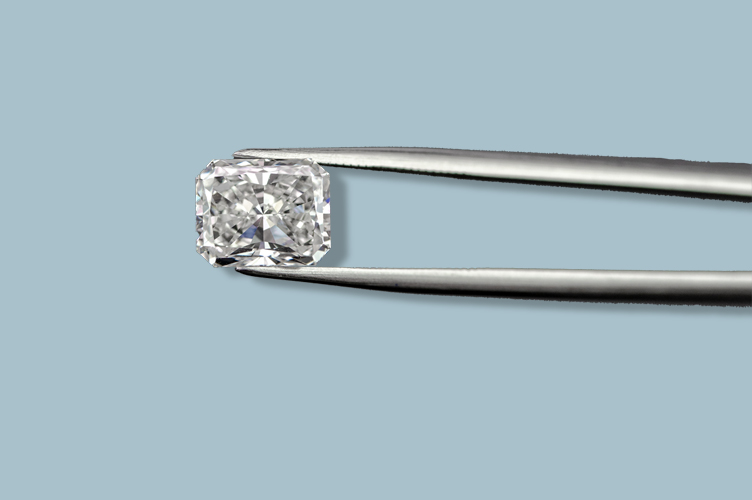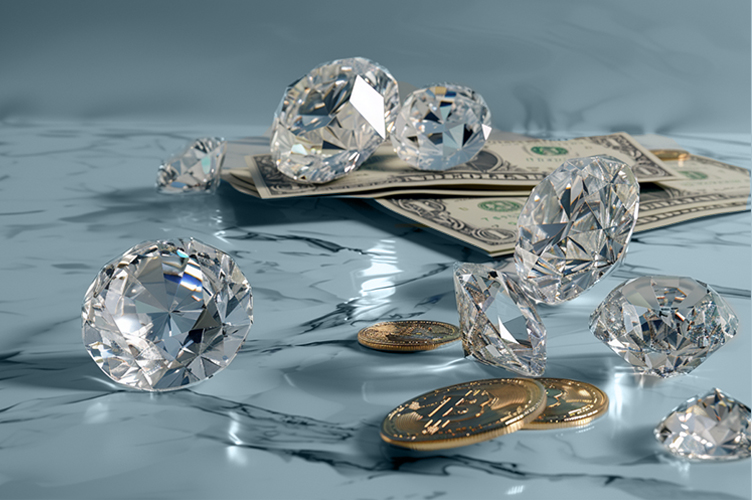Humans have been wearing jewelry for thousands of years. From the Paleolithic era to modern times, jewelry has served various purposes throughout human history. Jewelry can symbolize status, wealth, spiritual or ceremonial reasons, and personal expression.
While there isn’t a concrete answer to who invented jewelry, it is clear that modern jewelry is not just a means of personal adornment but also holds significant sentimental value for those who wear it.
Knowing the history of jewelry making and the legacy of your favorite pieces can help you understand the worth of your collection and why it needs protection.
“Ancient jewelry held great cultural and symbolic significance, often used as a status symbol or to convey religious beliefs.”
What You Will Learn
Ancient Jewelry
Ancient jewelry spans a vast historical period, from the Paleolithic era, around 2.58 million years ago, to the end of the Roman Empire in 476 CE. During this time, humans created jewelry using various materials, from animal bones and teeth to shells, amber, precious metals, and gemstones.
Ancient jewelry held cultural and symbolic significance, often used as a status symbol or to convey religious beliefs. In China, jade jewelry was considered a symbol of wealth, immortality, and power, while in Japan, traditional jewelry made from silver and gold featured intricate designs inspired by nature.
In the Americas, indigenous peoples created jewelry using materials such as turquoise and feathers, often for ceremonial purposes.
The creation of ancient jewelry required great skill and artistry. Jewelry makers in ancient times used various techniques, such as weaving, knotting, and beadwork, to create intricate pieces.
In some cultures, jewelry was cast using metal alloys or molded using clay or wax. Engraving, carving, and inlay were standard techniques in ancient jewelry making, often resulting in stunningly intricate designs that still inspire modern jewelry makers.
Egyptian Jewelry
Egyptian jewelry was created during a period spanning over 3,000 years, from around 3100 BCE to the end of the Ptolemaic period in 30 BCE. The ancient Egyptians believed that jewelry was significant and closely linked to religious beliefs and the afterlife.
Egyptian jewelry was often crafted using precious metals such as gold and silver and semi precious stones like turquoise and lapis lazuli. Some of the most iconic examples of Egyptian jewelry include the pectoral necklace of Tutankhamun, featuring winged scarabs, and the Cartouche necklace, which featured hieroglyphics spelling out the name of a pharaoh.
Ancient Egyptians are also considered the first culture to exchange wedding rings to represent devotion. Following the conquest of Alexander the Great, Egyptian jewelry makers used various techniques to create intricate pieces such as cloisonné.
This method involved dividing a metal surface into compartments using thin strips of gold or silver wire and then filling those compartments with brightly colored enamel. Another technique was granulation, where tiny gold beads were soldered onto a metal surface to create intricate patterns.
The Egyptians also used a technique called repoussé, which involved hammering metal from the back to create a design in relief. This technique was often used to create large, elaborate collars and bracelets. Other methods included casting and filigree work.
Egyptian jewelry is known for its intricate designs, vibrant colors, and intricate symbolic meanings. The techniques used by ancient Egyptian jewelry makers were highly advanced and have influenced jewelry-making traditions worldwide.
Greek and Roman Jewelry
Greek and Roman jewelry spans the period from around the 8th century BCE to the end of the Roman Empire in 476 CE. During this time, both civilizations produced stunning examples of jewelry that continue to inspire artists and designers today.
Greek and Roman jewelry was often highly ornate, featuring intricate designs and using precious materials such as gold, silver, and precious gems. Greek jewelry was often inspired by mythological creatures and figures, with the owl being a common motif.
In Rome, jewelry was often used to signify social status and power, with cameos and intaglios featuring the faces of emperors and other important figures.
The techniques used in Greek and Roman jewelry making were highly advanced for their time, with many of these techniques still in use today. Greek jewelers used granulation, fusing tiny gold beads to create intricate patterns, and filigree, twisting and shaping fine metal wire into ornate designs.
Roman jewelers used granulation, casting, enameling, and engraving to create intricate pieces. Greek and Roman jewelry showcases these ancient civilizations’ incredible artistry and craftsmanship. These pieces remain highly coveted by collectors and jewelry enthusiasts today.
Renaissance Jewelry
In opposition to the middle ages’ favor of religious iconography, the Renaissance saw a revival of classical learnings and arts. Therefore, the jewelry in this period mimicked ancient Roman and Greek designs, featuring intricate metalwork and precious stones.
Examples of Renaissance jewelry include the Medici necklace, which was made for the Medici family and features large pearls and intricate gold work, and the Armada Earring, an oversized pearl earring with a hanging ruby discovered in the wreckage of the Spanish Armada.
Renaissance jewelry was often made using elaborate metalwork, including niello and émail en résille, as well as enameling and gemstone settings. Pearls were a popular addition to many pieces, symbolizing feminine purity and innocence.
During the Renaissance, not only was jewelry worn for adornment, but it also served as a symbol of wealth and status. It was often given as gifts to aristocracy and royalty members and used to fund wars and political alliances.
Victorian Jewelry
Dramatic changes in jewelry design marked the Victorian period from 1837 to 1901. This era moved away from the neoclassical style of the early 19th century towards a more sentimental and romantic style. Victorian jewelers often designed jewelry during this period to commemorate significant life events such as births, deaths, and marriages.
Popular Victorian jewelry included mourning jewelry, which often featured black enamel and hair work, and sentimental jewelry, such as lockets and brooches with hidden messages or portraits. Signet rings, charm bracelets, and cameos were also popular. Some famous Victorian jewelry pieces include the Koh-i-Noor diamond, the Grand Duchess Vladimir Tiara, and the Beau Sancy diamond.
Victorian jewelry-making techniques included intricate metalwork, filigree, and engraving. Gemstones such as diamonds, pearls, and turquoise were also used extensively.
During the latter part of the Victorian era, technological advances allowed for the mass production of jewelry, making it more accessible to the middle class. However, another famous jewelry design school that rejected rapid industrialization arose during the later Victorian Era: the Arts and Crafts movement.
The Arts and Crafts movement emphasized traditional techniques such as enameling, metalwork, and stone cutting. Jewelry designers also focused on handcrafted designs featuring intricate details and natural forms, often inspired by the natural world.
The movement rejected using mass-produced, machine-made materials, instead favoring precious metals, gemstones, and other natural materials. The designs often incorporated elements of the Gothic and Renaissance styles, with a focus on beauty and craftsmanship over practicality or functionality.
“This era saw the emergence of new materials, innovative techniques, and artistic movements that contributed to the development of modern jewelry.”
Modern Jewelry
The period of modern jewelry can be traced back to the late 19th century and the beginning of the 20th century. This era saw the emergence of new materials, innovative techniques, and artistic movements that contributed to the development of modern jewelry.
One of the most important artistic movements during this period was Art Nouveau, which embraced the natural forms and organic shapes of the natural world and used materials like glass beads, horns, and enamel.
Towards the middle of the 20th century, modern jewelry included pieces made with new materials such as plastics, Lucite, resin, aluminum, and stainless steel. Clean lines and geometric shapes characterized these modernist designs.
Some significant pieces epitomizing the modern jewelry aesthetic include the Cartier Love Bracelet and the Tiffany & Co. Round Diamond Engagement Ring.
Twenty-first-century modern jewelry making techniques include computer-aided design (CAD) and 3D printing. They have revolutionized the jewelry industry by making it possible to create complex designs and prototypes quickly and efficiently. With modern techniques and materials, designers continue to create stunning and innovative pieces of jewelry that reflect the current era.
Protect Your Important Jewelry
Your jewelry is not just a mere possession; it’s a valuable and cherished part of your life. That’s why it must be protected with BriteCo’s specialized jewelry insurance.
BriteCo offers comprehensive coverage against theft, loss, damage, and mysterious disappearance. With BriteCo, you can enjoy peace of mind knowing that your jewelry is fully protected, whether a modern or vintage piece.
BriteCo has low premiums with an average of around $4 per month, with no deductibles or hidden fees, giving you affordable protection for your valuable jewelry items.
Also Check:
Exploring Types of Diamond Settings for Engagement Rings and Wedding Band
What is Costume Jewelry? | BriteCo Jewelry Insurance
What to Do with Old Jewelry: 4 Creative DIY Ideas
Get Educated on the Different Types of Diamonds




